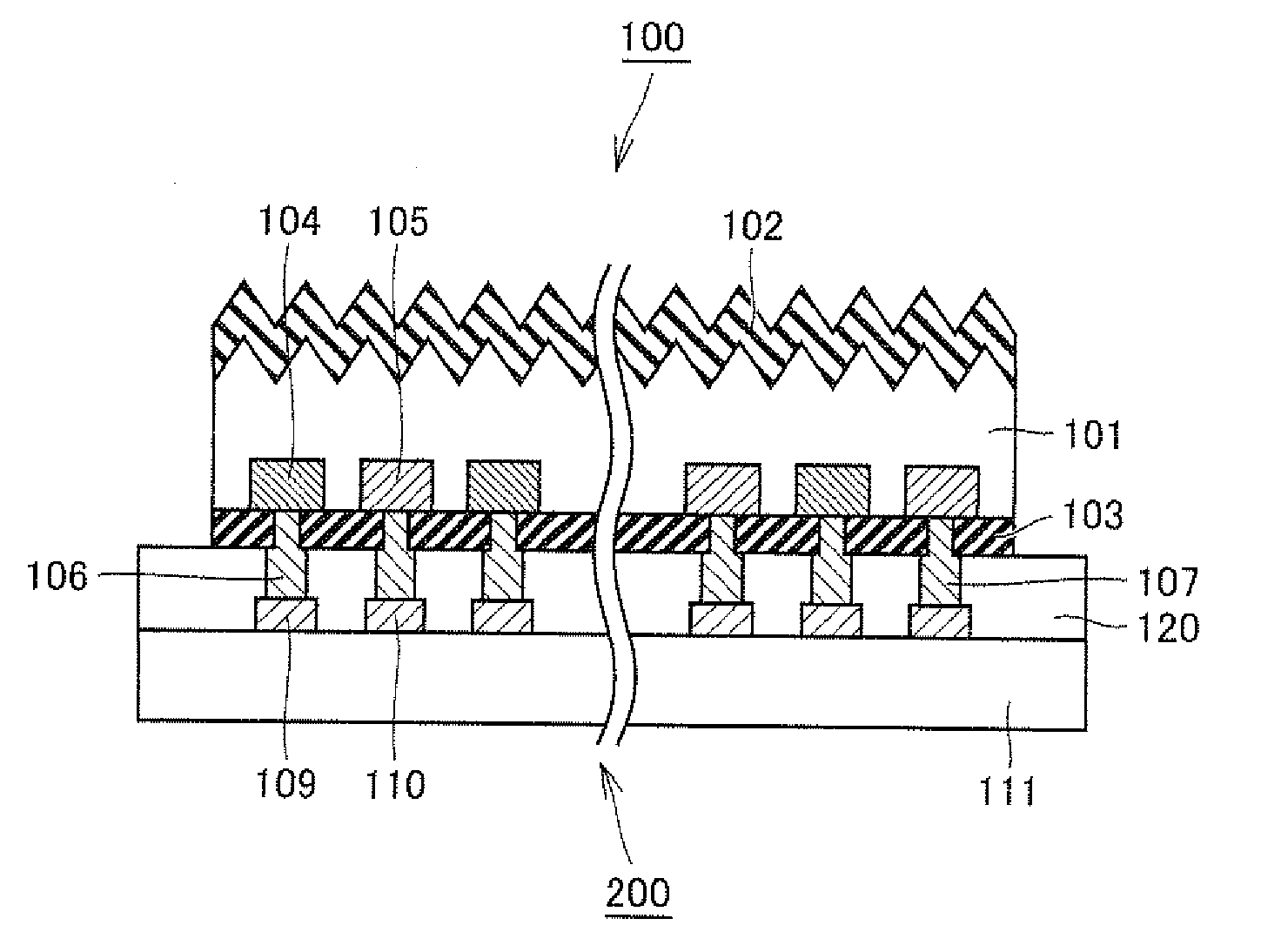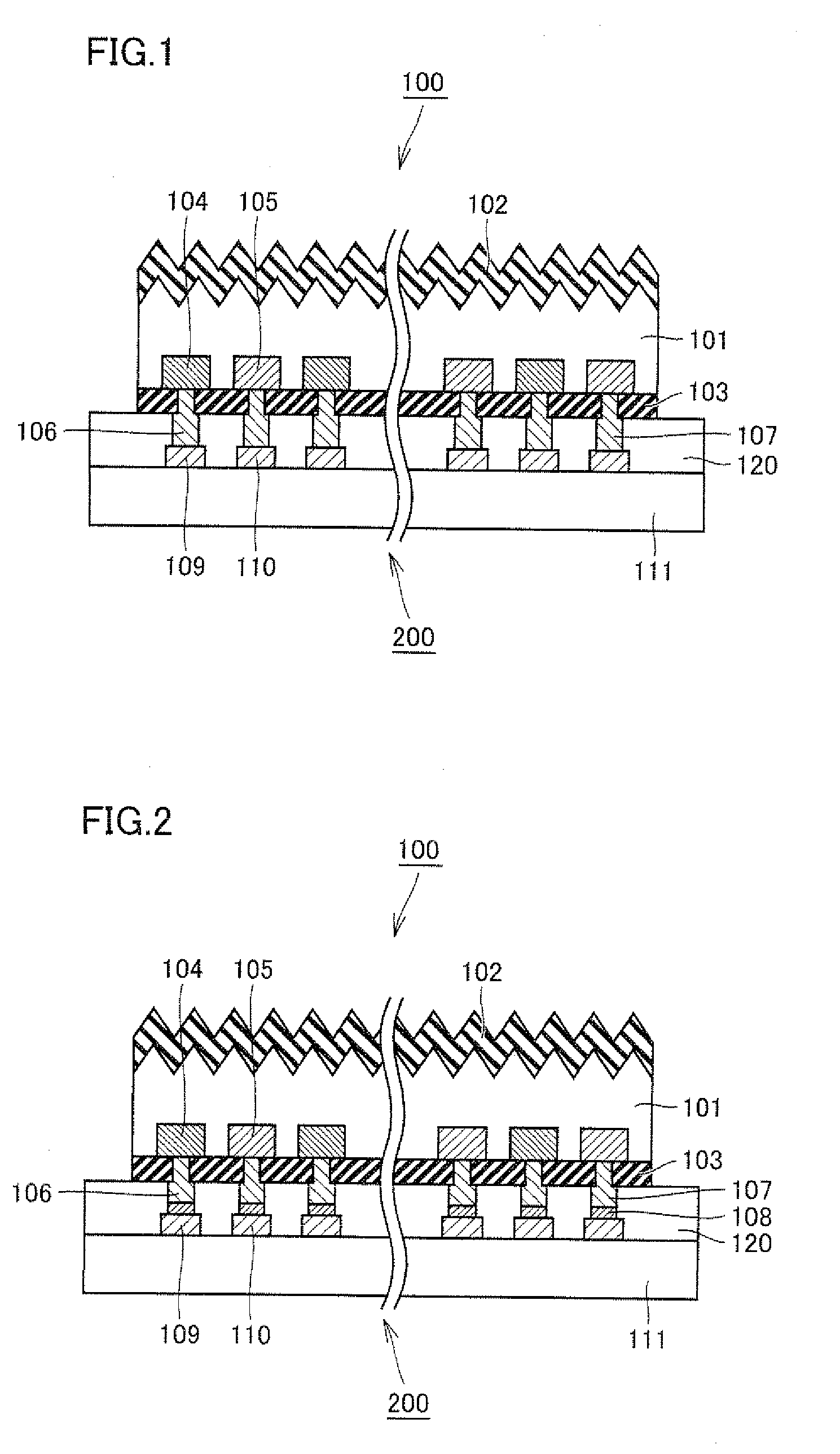Solar battery, method for manufacturing solar battery, method for manufacturing solar cell module, and solar cell module
- Summary
- Abstract
- Description
- Claims
- Application Information
AI Technical Summary
Benefits of technology
Problems solved by technology
Method used
Image
Examples
example 1
[0098]First, back-side electrode type solar cells each having a rear surface formed as shown in FIG. 3(a) were fabricated using a conventionally known method. Each solar-cell 100 was configured so that strip-shaped n electrodes 106 and p electrodes 107 were arranged alternately one by one on the rear surface of n type silicon substrate 101 having a light-receiving surface and a rear surface both having a shape of square with each side of 100 mm.
[0099]Then, the method shown in FIG. 5(a)-FIG. 5(c) was employed to transfer wires made of copper to an adhesive agent 120 provided on an insulative substrate 111 made of PET. In this way, a wiring substrate 200 was fabricated. As adhesive agent 120, an acrylic-based viscous adhesive agent was used.
[0100]Then, as shown in FIG. 7, sixteen solar cells 100 were placed on one wiring substrate 200. In this way, a solar battery was fabricated in which solar cells 100 were fixed onto wiring substrate 200 by adhesive agent 120. In fabricating the sol...
example 2
[0106]First, back-side electrode type solar cells each having a rear surface formed as shown in FIG. 3(a) were fabricated using a conventionally known method. Each solar cell 100 was configured so that strip-shaped n electrodes 106 and p electrodes 107 were arranged alternately one by one on the rear surface of n type silicon substrate 101 having a light-receiving surface and a rear surface both having a shape of square with each side of 100 mm, Each of the solar cells was soaked in an Sn—Bi solder bath to coat the electrode portions with the solder.
[0107]Then, as shown in FIG. 8(a), an acrylic-based viscous adhesive agent was applied to a portion of the rear surface of the solar cell other than the electrodes provided thereon, by means of screen printing. Thereafter, it was baked at 100° C., thus exhibiting viscosity of the viscous adhesive agent.
[0108]Then, as shown in FIG. 7, sixteen solar cells 100 were placed on one wiring substrate 200. In this way, a solar battery was fabrica...
PUM
| Property | Measurement | Unit |
|---|---|---|
| Temperature | aaaaa | aaaaa |
| Temperature | aaaaa | aaaaa |
| Viscosity | aaaaa | aaaaa |
Abstract
Description
Claims
Application Information
 Login to View More
Login to View More - R&D
- Intellectual Property
- Life Sciences
- Materials
- Tech Scout
- Unparalleled Data Quality
- Higher Quality Content
- 60% Fewer Hallucinations
Browse by: Latest US Patents, China's latest patents, Technical Efficacy Thesaurus, Application Domain, Technology Topic, Popular Technical Reports.
© 2025 PatSnap. All rights reserved.Legal|Privacy policy|Modern Slavery Act Transparency Statement|Sitemap|About US| Contact US: help@patsnap.com



